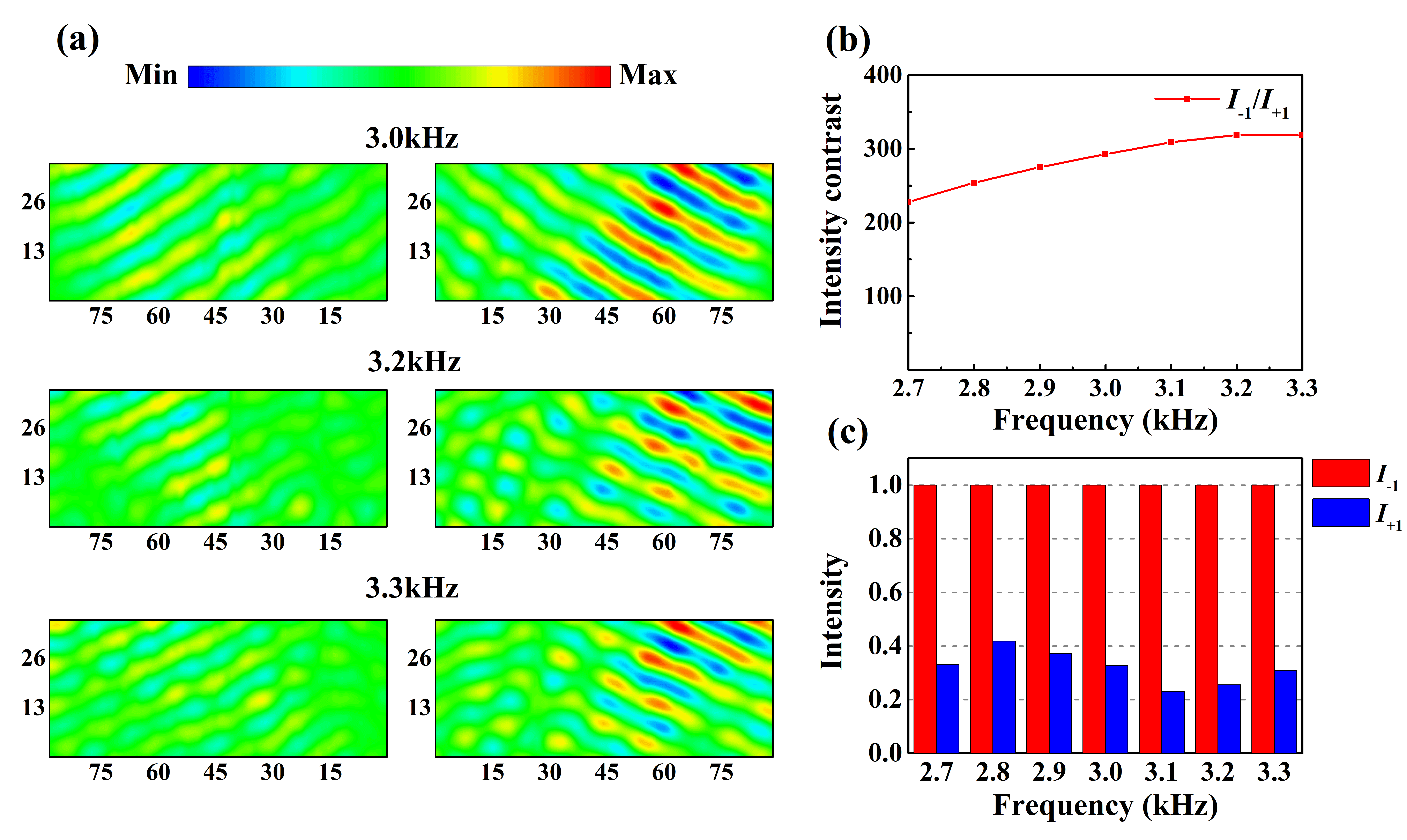Acoustic asymmetric transport is important in the noise control and communication acoustics. Theoretical research and experimental verification of acoustic asymmetric transport have attracted much attention. Recent progress on non-Hermitian systems has yielded a scheme to realize asymmetric transport without nonlinear effects or mode conversion.
Researchers from the Institute of Acoustics of the Chinese Academy of Sciences (IACAS) proposed an acoustic asymmetric diffraction grating based on passive parity-time-symmetric medium and experimentally verified the asymmetric diffraction phenomenon in a two dimensional waveguide.
The study has been published online in Physical Review Applied on 19 September, 2019.
The researchers studied in the experimental realization of an asymmetric diffraction grating based on a cleverly designed passive PT-symmetric medium, in which the loss was introduced as an extra modulation factor, and the energy distribution could be adjusted more freely. The proposed passive PT-symmetric medium composed of additional cavities and leaked holes. By skillfully combined these two unit cells, the composite unit cell could modulate the real and imaginary parts of refractive index simultaneously. When the modulation amplitudes of real and imaginary parts were equal, asymmetric diffraction was observed in both simulated and experimental results at exceptional point. The designed structure was helpful for further research on non-Hermitian acoustic systems.

Figure 1. Distribution of refractive index, experimental structure and asymmetric diffraction sound pressure fields.
Experimental results showed that the asymmetric diffraction effect of the designed passive PT-symmetric grating was available in a broad frequency band. In the measured sound pressure fields displayed in Figure 2. (a), all the +1st-order diffractions with negative incident angle (left panel) were much weaker than the -1st-order diffractions with positive incident angle (right panel). The asymmetric diffraction in a wide frequency band (2.7-3.3 kHz) could be observed in both simulated result [Figure 2. (b)] and experimental result [Figure 2. (c)].
This work was supported by the National Natural Science Foundation of China (Grant No. 11874383), the Youth Innovation Promotion Association CAS (Grant No. 2017029), and the IACAS Young Elite Researcher Project (Grant No. QNYC201719).

Figure 2. Asymmetric diffraction in a wide frequency range: (a) The measured +1st-order diffractions and -1st-order diffractions are shown in left panel and right panel, respectively; (b) The simulated diffraction intensity contrast; (c) Corresponding intensity bars of measured sound fields.
Reference:
YANG Yuzhen, JIA Han, BI Yafeng, ZHAO Han, YANG Jun, Experimental demonstration of an acoustic asymmetric diffraction grating based on passive parity-time-symmetric medium, Physical Review Applied 12, 034040 (2019). DOI: 10.1103/PhysRevApplied.12.034040.
Contact:
ZHOU Wenjia
Institute of Acoustics, Chinese Academy of Sciences, 100190 Beijing, China
E-mail: media@mail.ioa.ac.cn